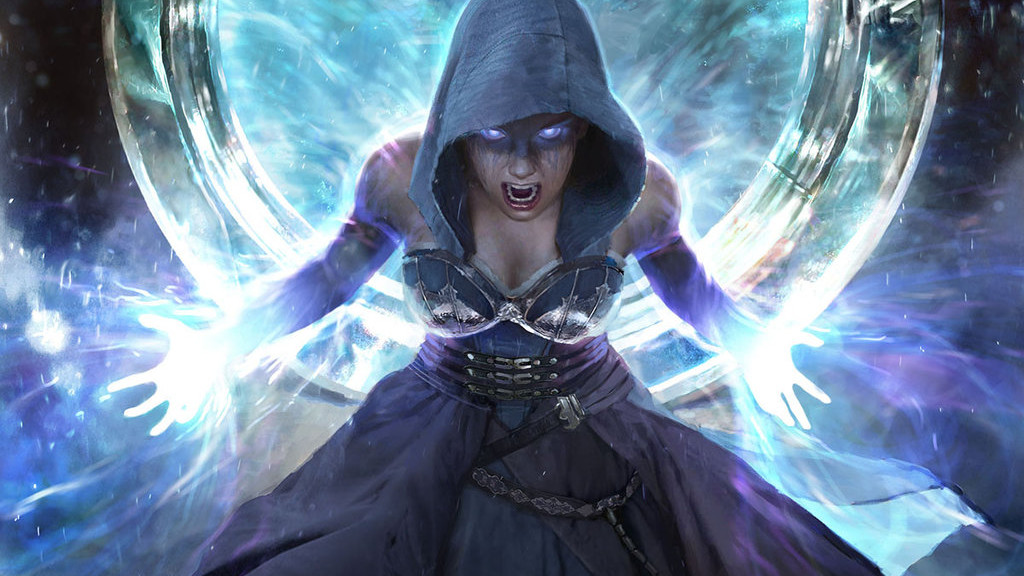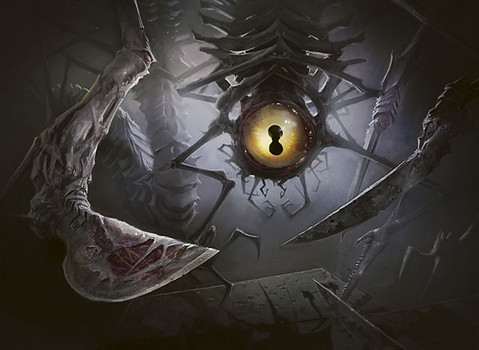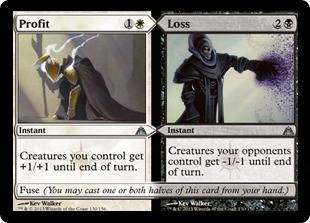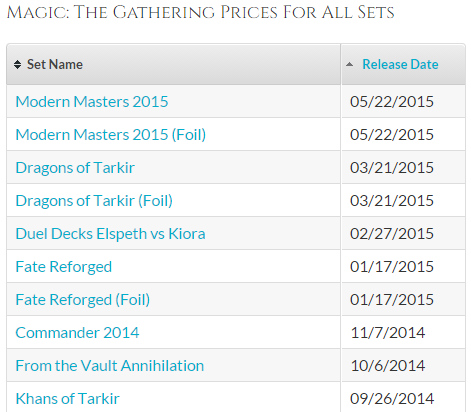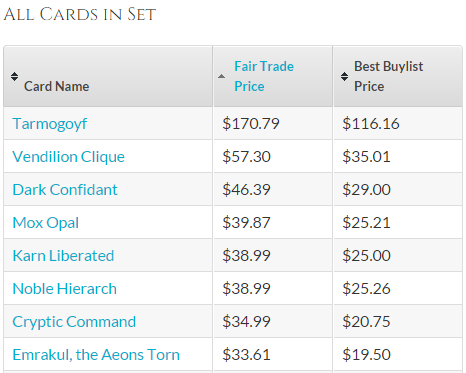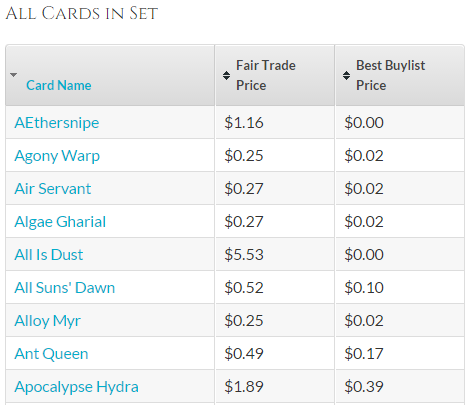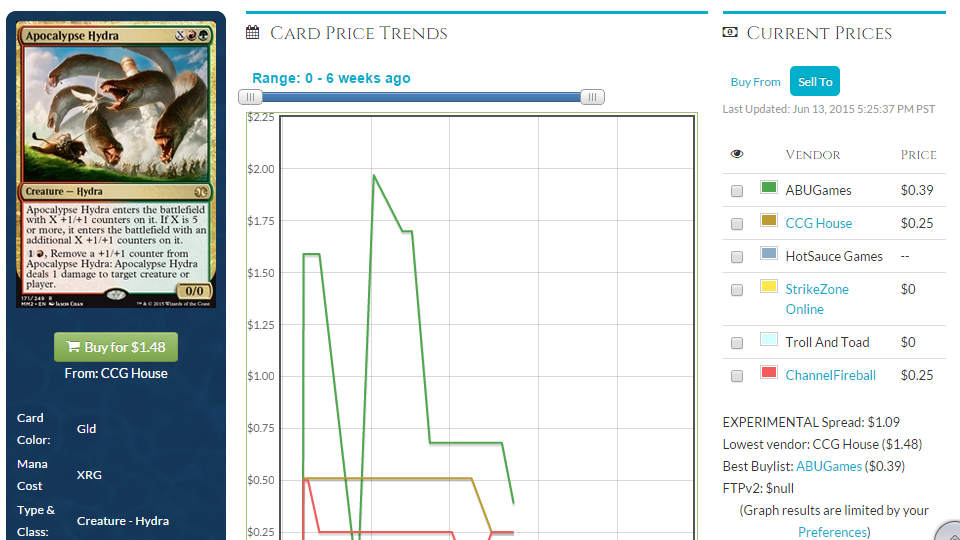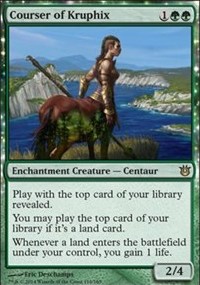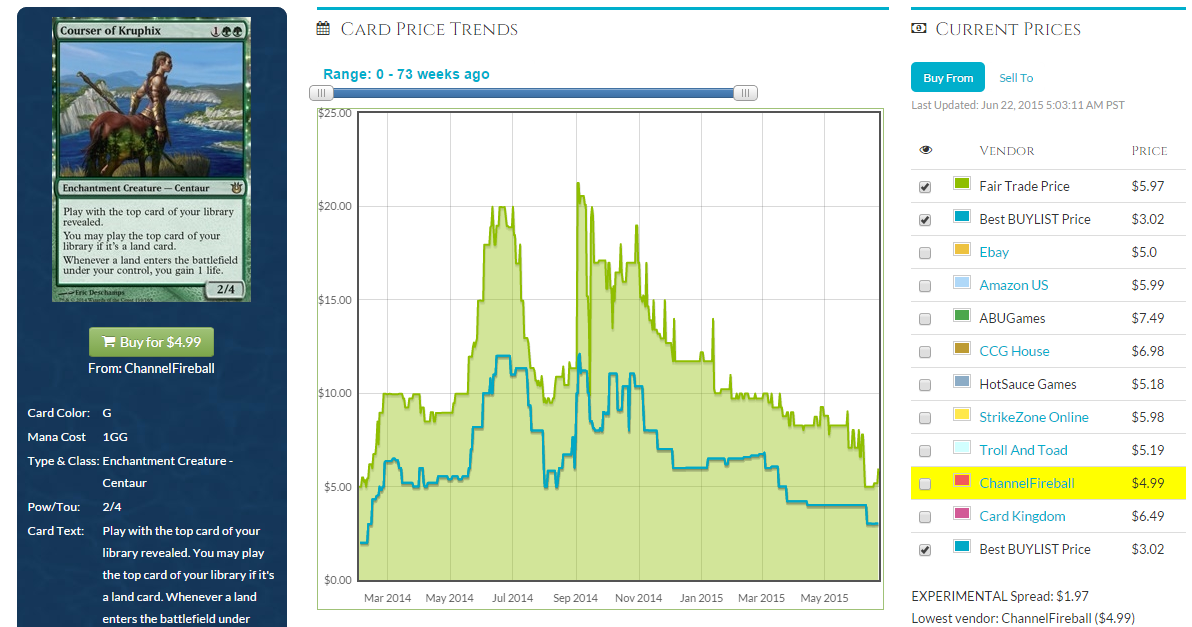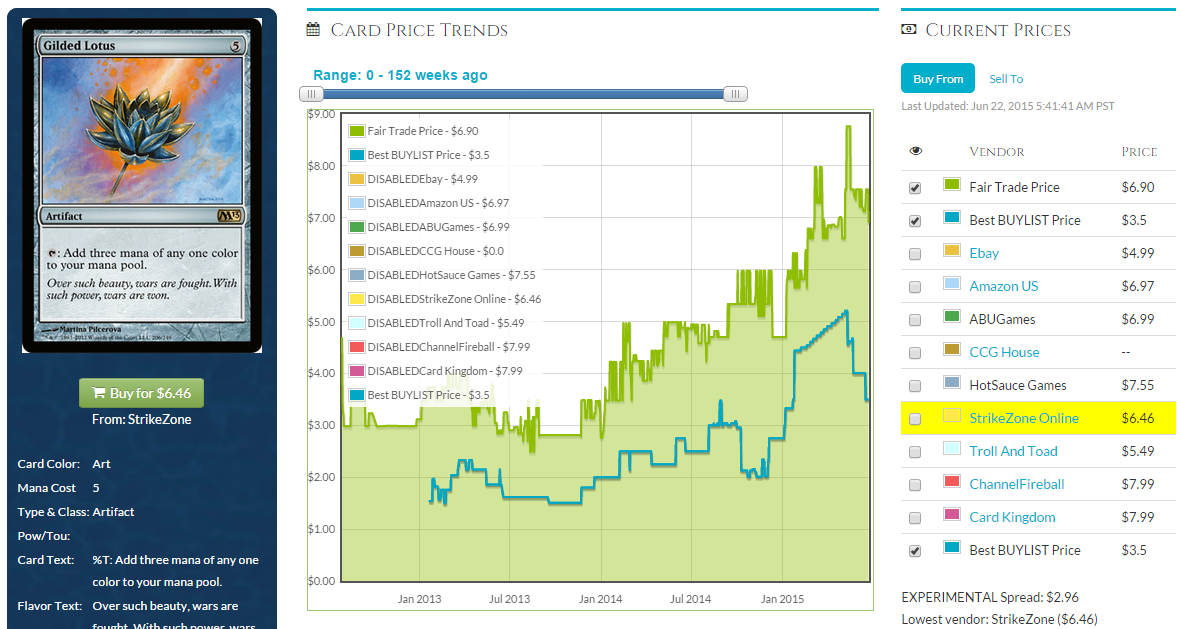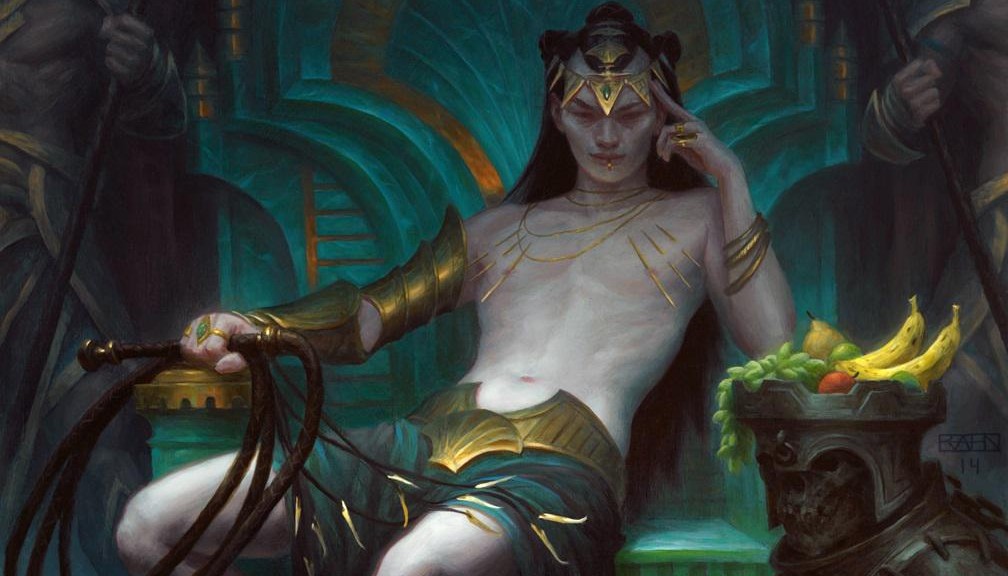By: Danny Brown
Most players with a modicum of interest in MTG finance know the “obvious” calls leading up to the rotation of Theros this fall: getting rid of Theros block stuff that isn’t bottomed out already or applicable to eternal formats should be first on your list (three months ago, that is). Not far behind should be the acquisition of Khans of Tarkir block cards that have dipped a bit too far in the face of all the supply that has been put out on the market in the last nine months, or that might be very powerful with the types of cards we expect to see in Battle of Zendikar.
But I’m not going to talk to you about the Tasigurs and Siege Rhinos of Tarkir today. Rather, I’m going to discuss the dregs of Khans of Tarkir—the cards you probably don’t even remember existing unless you’re still actively drafting the set.
On Tasigur
Before we get into that, let me immediately do what I just said I wasn’t going to do and discuss Tasigur. But I’m doing for contrasting purposes, so it’s totally cool.
Say you’re picking up Tasigur at around $6 right now. That’s almost certainly a good call (I’ve been trading for them at that price myself), but what’s the ceiling on that type of spec? Tasigur is from a small set (good), but is only a rare (bad). He’s powerful in eternal formats (good), but the small set he’s in got drafted twice as much as a New Phyrexia or a Dragon’s Maze (bad).
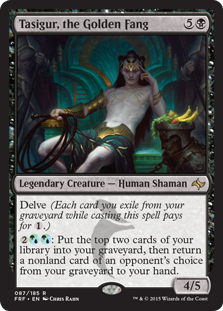
Let’s assume Tasigur triples up to $18. Vendors feel confident in being able to sell copies at that price, so the spread is at a quite-reasonable-for-an-eternal-staple 33 percent. That means that buylists will be at about $12, and assuming that’s your out, this is a double-up, which is a success by any metric. Sell all those $6 Tasigurs for $12 and glory in your wisdom and foresight.
That’s probably a reasonable expectation of what will happen in the fall, but what about your wildest dreams? What if Tasigur emerged as the de facto beater in Standard, Modern, and Legacy and jumped to an absurdly large ceiling?
How absurd is too absurd for wildest-dream-level absurd, though? Do you really believe a rare in a Standard-legal set could reach (and maintain) $50? I do not. The absolute best-case scenario that still strikes me as within the realm of possibility is probably $40 with a 25-percent spread. This is by no means a prediction of what’s going to happen (I don’t actually believe it will get that high, at least within the near to mid future), but in my estimation of the card and circumstances around it, that’s the ceiling of what I believe is possible: a quintuple up.
Of course, the (just as unlikely) downside is that Tasigur gets reprinted/banned/outclassed/hosed or any number of other things to make him more or less useless. With his eternal pedigree, Tasigur dipping down to bulk-rare status is about as unlikely as him exceeding $50 retail, but crazier things have happened. In that (again, very unlikely) case, you bought in at $6 and have a card worth as low as 10 or 15 cents per copy.
These two extremes are very unlikely, but despite the low chances, they could happen. I fully expect the more realistic scenario I began with ($18 retail/$12 buylist) to be closest to the truth, and that’s why I think Tasigur is a good buy, but the range of possibilities goes from a rather large loss per card (proportionally) to around five times the buy-in price. That’s a pretty large range that has as much downside as upside, disregarding the likelihood of these extremes.
Speculating on Dregs
On the other hand, picking up cards that are at or just barely above bulk right now mixes up the range significantly. If you buy a rare for 15 cents each, you’re not risking much if anything—you can always get 10 cents per rare when selling in bulk, and some dealers will happily pay 12 or even 15 cents each. Even buying cards at 20 or 25 cents isn’t all that risky.
The upside on this type of card, though, is substantially more than the ceiling quintuple up that we presumed with Tasigur.
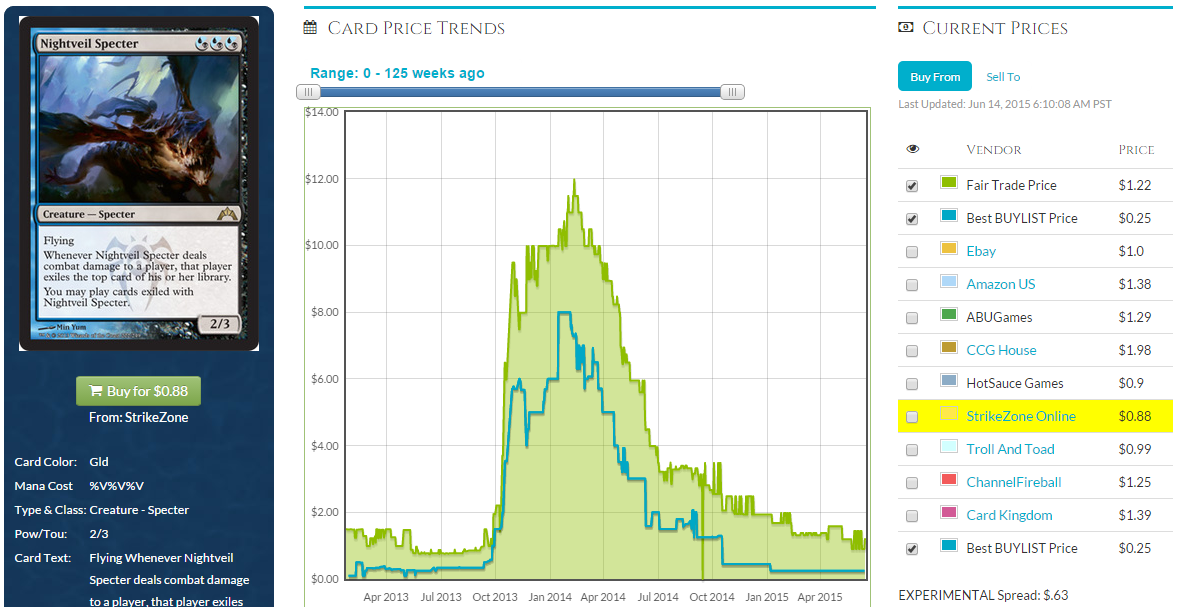
Nightveil Specter is this type of card. Though the floor wasn’t quite as low as the 25 cents referenced so far, it did get as low as 75 cents TCGplayer mid, and the most successful speculators on this card managed to snag copies under 50 cents. When the card became a staple in Mono-Black Devotion, it catapulted to $12 with an $8 buylist, meaning some financiers got around sixteen times their initial investments back.
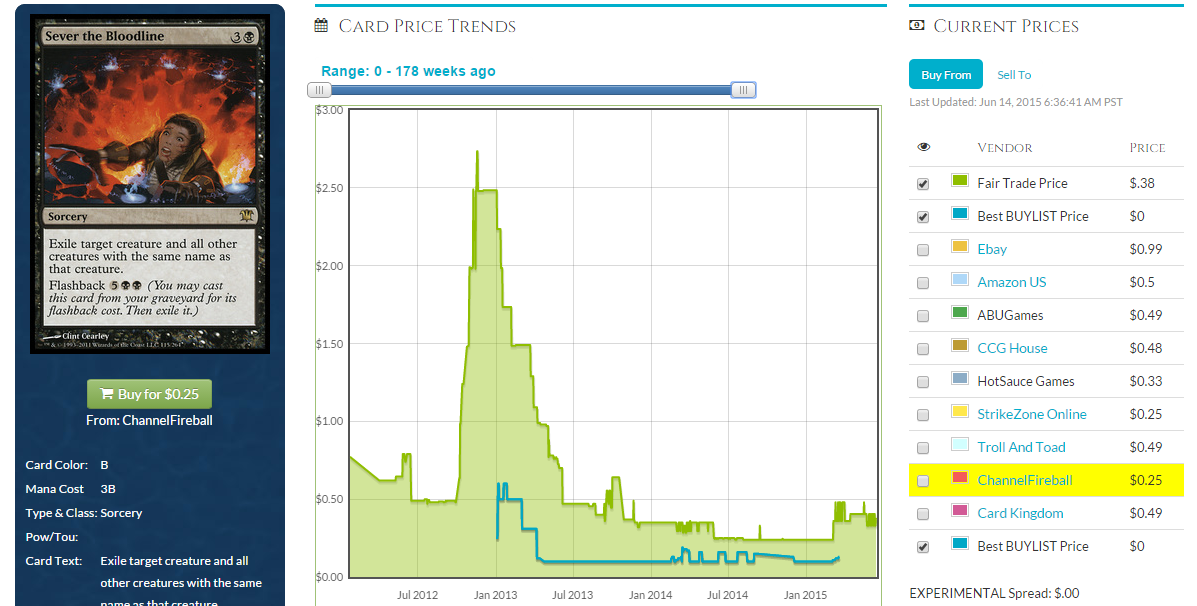
Sever the Bloodline, an Innistrad rare, bottomed out in Standard at 48 cents TCGplayer mid, and I personally bought copies as low as 15 cents from the site. When the card reached $2.50 retail, the buylist price didn’t follow, but that’s where trading comes in—I traded out all of my copies for at $2.50, in turn picking up cards that I hoped would increase even more.
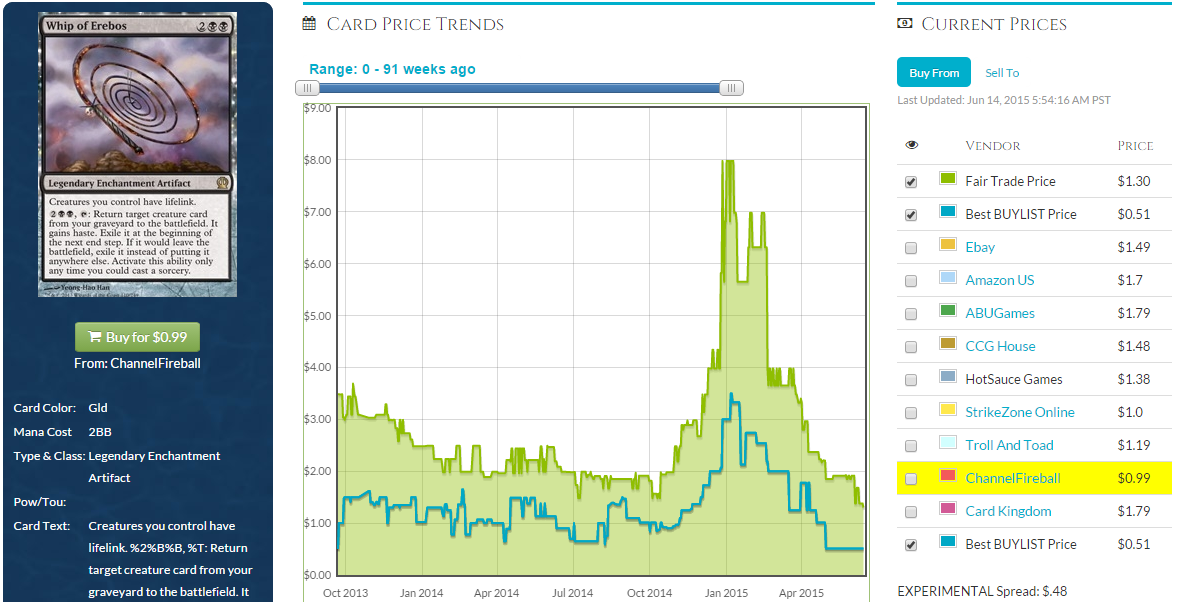
Whip of Erebos bottomed out a little below $2 TCGplayer mid, but copies were around for $1 and would have gotten you $8 in trade or $3 on buylists, a nice little increase if you bought in at the floor.
To varying degrees, almost every set has a low-cost and forgotten rare that becomes relevant in the following year’s new Standard format, even if only briefly. These cards often spike hard, and as you can see in the three examples above, often fall off in a big way as the format evolves and these cards get closer to rotating themselves.
So the pros of speculating on this type of low-cost but high-reward rare are that the buy-in is low, the risk of loss is minimized (due to the floor of bulk rares), and the potential multiplier on one’s investment is much higher if the card hits. The cons are that the ceiling price doesn’t often last long, and the buylist price doesn’t always follow, meaning you have to trade in order to get value from your specs. You also need to buy a lot more copies to make the same amount of total profit.
I’m on record as not wanting MTG finance to consume too much time and not liking to feel rushed to get rid of specs, but even I must admit that the pros outweigh the cons here, so every year around this time—early summer—I like to take a close look at the types of rares that are at the bottom of the list of a price-sorted set.
Durdles and Draft Bombs
As you might expect, among the cards in Khans of Tarkir that are less than 30 cents TCGplayer mid, we have a whole lot of cards that only the most casual of casual players could love. Cards like Thousand Winds, Ivorytusk Fortress, Kheru Lich Lord, and Rakshasa Vizier are not at all exciting for more “hardcore” casual formats like Commander and Cube, and even were only mildly exciting in Draft.
There’s a whole lot of junk in this category, but one creature stands out from the rest of the field: Necropolis Fiend. Just from virtue of being included in an Intro Pack, the card has limited upside. But let’s not forget that it saw some early Standard play after Khans of Tarkir was released. Yes, Tasigur, is much more efficient, but Fiend acts as removal and can fly over ground troops, giving it utility that Tasigur just can’t provide. Just glancing at TCGplayer, there are lots of copies available in the 10 to 20 cent range. I don’t look at this card and strongly believe that it’s going to spike in the fall, but given its past play and a financial risk of virtually zero, the question is whether you’re willing to spend the time it would take to purchase, store, and out this card on the small chance that it does something.
Besides the durdly creatures, the dregs of Khans rares offer up plenty of spells that were bombs in Draft but not really exciting outside of it (for example, Flying Crane Technique and Icy Blast). There’s also cards that just aren’t exciting even in Draft, like Howl of the Horde or Trap Essence. There’s just not a lot here that seems to have breakout potential in a new Standard format.
Looking a little higher than the below-30-cent rares, a few more things do stick out. Ghostfire Blade is at a TCGplayer mid of 35 cents, and while it’s no Cranial Plating, it has shown up in the occasional Affinity list to further bolster the deck’s tiny robotic troops. Duneblast (30 cents TCGplayer mid) was considered one of the most powerful cards in Khans of Tarkir Draft, and though a seven-mana wrath has as much chance as being a staple in Standard as Brainstorm being in Battle for Zendikar, the power level of this card could make it appealing to Abzan Commander players. Again, there are copies on TCGplayer for under 15 cents right now. If this breaks a dollar, sweet, but if not, the only thing lost is the time it takes to bulk these out eventually.
Finally, let’s talk about Savage Knuckleblade, which has dipped all the way down to 58 cents at TCGplayer mid. Brian Kibler had some success with a Temur Aggro archetype shortly after Khans was released, but Big Knucks hasn’t done anything since that time and has plummeted in value.
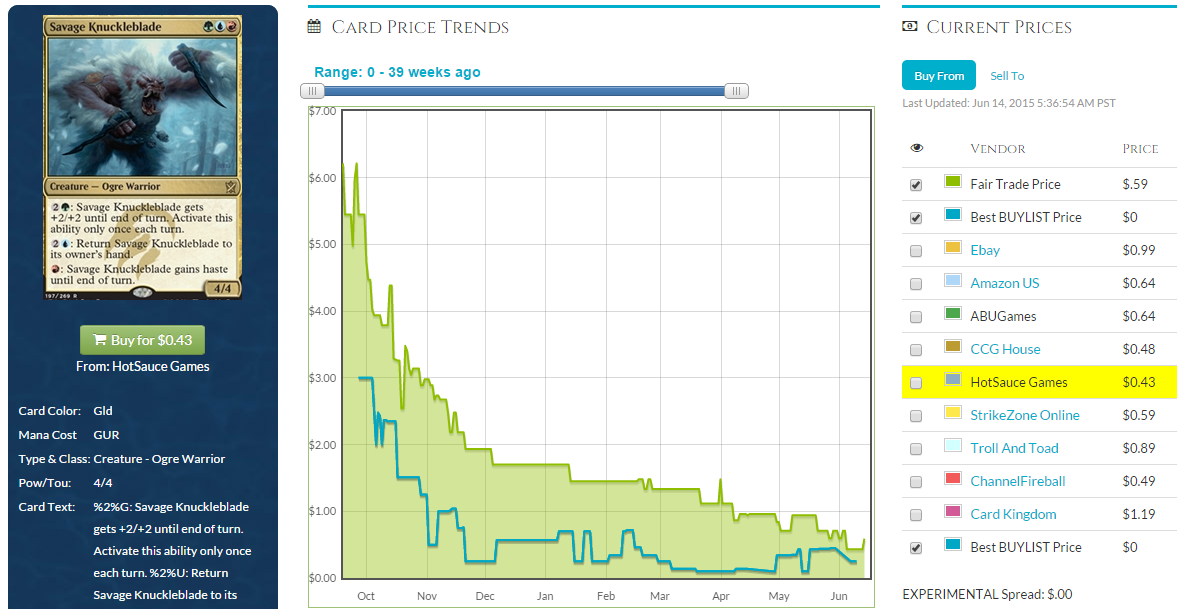
The card is clearly powerful, but it just hasn’t quite fit in to this Standard format. My inclination is to stay away from this at 40 cents (where many copies are available), as Zendikar seems unlikely to offer support for three-color decks. That won’t keep me from grabbing copies as throw-ins when possible, though, because this really is a powerful card and could easily hit $5 if people are playing it.
Uncommon Love
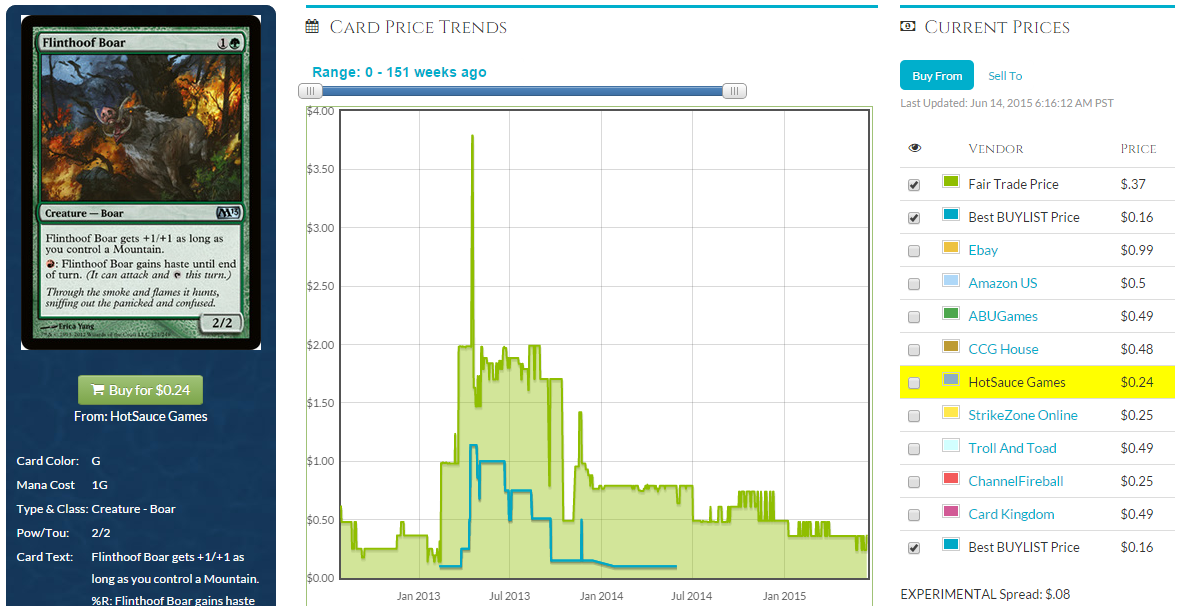
My first real success with speculating on an uncommon came with Flinthoof Boar, which I picked up a bunch of at 18 cents each and eBayed out for just under $2. Ever since that time, I’ve been keeping an eye on potential breakout uncommons that are being left on draft tables across the world.
When I look at the uncommons of Khans, there are five specific ones that stick out to me most:
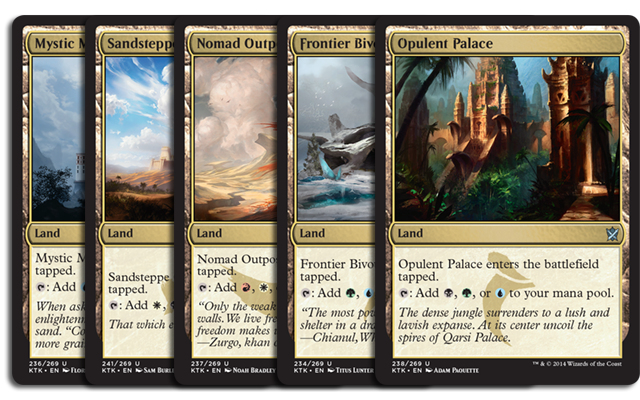
Copies of the trilands abound on TCGplayer for around 20 cents each. Pretending that there’s not tons more copies of Khans of Tarkir trilands than Shards of Alara ones would be wrong, but it is worth pointing out that the Shards trilands buylist for over a dollar and retail for nearly two—and they have all had reprints since Shards, so there’s not that many more copies of the Khans ones.
Although the long-term prospects on Khans trilands look good, if they see a lot of Standard play this fall, the short-term prospects will be even better for those who have copies at their disposal.
Assuming the Battle for Zendikar lands are the enemy fetches (a fair assumption, I think), that means we’ll have ten fetches, five trilands, ten gainlands, and…whatever is in Magic Origins. How deep I go on the trilands will be highly predicated on what fixing is available in this set: if it looks like three-color decks will be supported, I’m much more willing to pick up trilands en masse. If not, they’ll be slow gainers that aren’t worth acquiring with as much haste.
Small Buys, Big Gains
Keeping an eye on Magic Origins spoilers is very important at this point, because they can hint to us what might be good in the next Standard format, which will in turn lead us to buying the correct cards from Khans block.
It’s always worth going through the bottom cards of a set to see if anything is blatantly underpriced. There’s nothing that screams BUY ME NOW in Khans of Tarkir, but there is potential in some of the cards I called out above. Magic Origins spoilers will help dictate how to handle these penny-stock-style picks, so keep a close eye.
I’m 500 words over my limit and I didn’t even touch on Fate Reforged and Dragons of Tarkir, but there’s a lot of opportunity in these sets as well. Do you see anything that sticks out? You know what to do.
